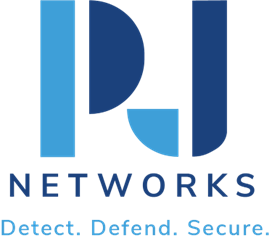The Essential Guide to SIEM: Protecting Your Business in the Digital Age
Introduction to SIEM
SIEM, cybersecurity, digital protection—these are terms you’re probably hearing a lot nowadays. But what is SIEM exactly? Let me break it down for you. SIEM stands for Security Information and Event Management. It’s like hiring a digital watchman that gathers and analyzes all your security data in one place. Sounds crucial, right? It is.
Why SIEM is Crucial for Modern Businesses
In today’s fast-paced world, cyber threats are evolving faster than you can say breach. That’s why SIEM is not just important; it’s necessary. Here’s why your business needs it:
- Centralized Security: A SIEM solution offers a consolidated view of your entire IT infrastructure security.
- Real-time Monitoring: Offers 24/7 monitoring to catch threats as they emerge.
- Quick Incident Response: Identifies and mitigates threats quickly, reducing damage.
- Regulatory Compliance: Helps you meet compliance requirements with clear audit trails.
- Detailed Reporting: Provides actionable insights to refine your security posture.
Key Features of SIEM Solutions
Now that we agree SIEM is essential, let’s dig into what makes a SIEM solution tick. Here are the standout features you should know:
- Log Management: Collects logs from multiple sources for comprehensive security insights.
- Data Aggregation: Combines information from various sources to paint a complete picture.
- Advanced Correlation: Connects the dots between disparate events to uncover hidden threats.
- Anomaly Detection: Uses machine learning and algorithms to detect unusual patterns.
- Incident Monitoring and Alerting: Continuous monitoring with real-time alerts to address threats promptly.
Steps to Implement SIEM in Your Organization
Ready to protect your business with a SIEM solution? Here’s how you can implement SIEM effectively:
- Assess Your Needs: Understand what you need to protect and what level of monitoring is required.
- Select a Solution: Choose a SIEM solution that fits your business size and complexity.
- Plan Your Deployment: Define the scope, timelines, and responsibilities for deployment.
- Data Integration: Ensure your SIEM can integrate with existing IT systems for seamless operations.
- Customize Alert Thresholds: Set up alerts that make sense for your security landscape.
- Train Your Team: Train your team on SIEM capabilities and response procedures.
- Conduct Regular Audits: Keep your SIEM solutions optimized with periodic reviews and updates.
Conclusion and Best Practices
In wrapping things up, SIEM is the cornerstone of effective cybersecurity in this digital era. Start securing your digital assets by following these best practices:
- Continuous Monitoring: Make sure SIEM is running 24/7 for real-time threat detection.
- Regular Updates: Keep your SIEM software updated for the latest threat intelligence.
- User Awareness: Educate your team about the importance of cybersecurity and maintaining vigilance.
- Post-Incident Reviews: After an incident, evaluate your SIEM’s performance for improvements.
Remember, in the digital age, staying proactive with your business security can make all the difference. Implementing SIEM, cybersecurity measures will set you on the path of digital protection and strong business security.
